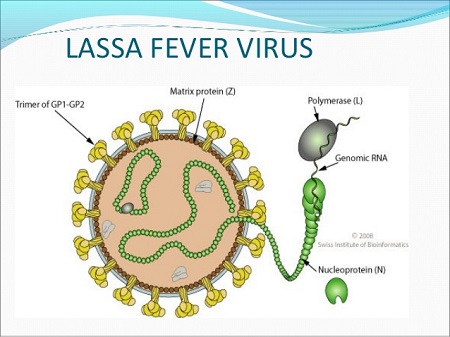Lassa fever
Lassa fever
or Lassa hemorrhagic fever (LHF) is an acute viral hemorrhagic
fever caused by the Lassa virus
and first discovered in 1969 in the town of Lassa, in Borno State,
Nigeria.
Lassa fever is a member of the Arenaviridae
virus
family. Similar to ebola, clinical cases of the disease had been
known for over a decade, but had not been connected with a viral pathogen
Cause
Lassa virus is zoonotic
(transmitted from animals), in that it spreads to humans from rodents,
specifically multimammate mice (Mastomys natalensis). This is probably
the most common mouse in equatorial Africa, ubiquitous in human households and
eaten as a delicacy in some areas. In these rodents,
infection is in a persistent asymptomatic
state. The virus is shed in their excreta (urine and feces), which can be
aerosolized. In fatal cases, Lassa fever is characterized by impaired or
delayed cellular immunity leading to fulminant
viremia.
Prevention
Control of the Mastomys rodent population is
impractical, so measures are limited to keeping rodents out of homes and food
supplies, as well as maintaining effective personal hygiene.



No comments:
Post a Comment